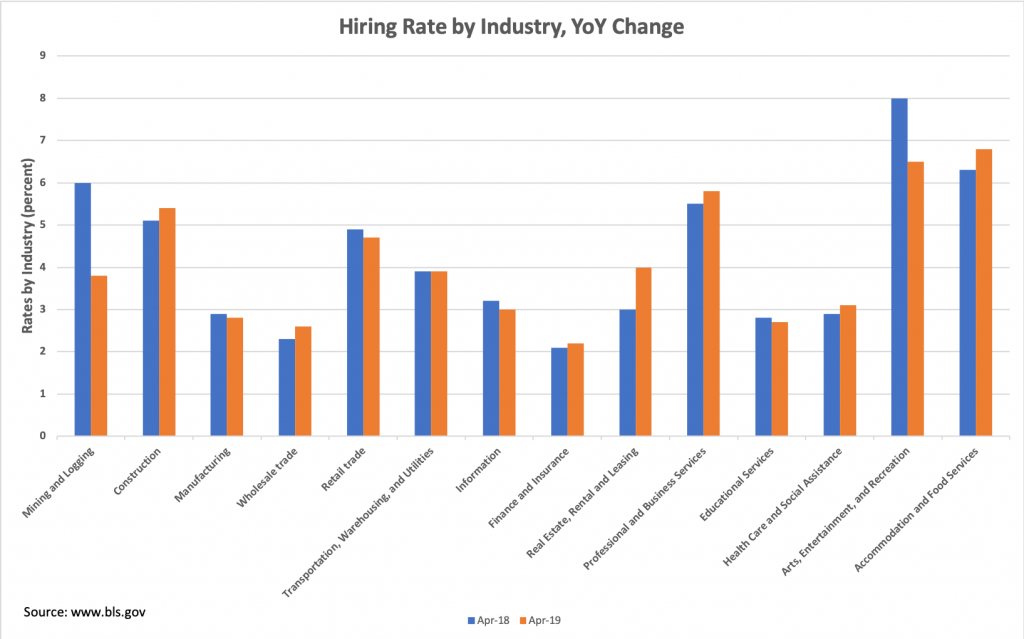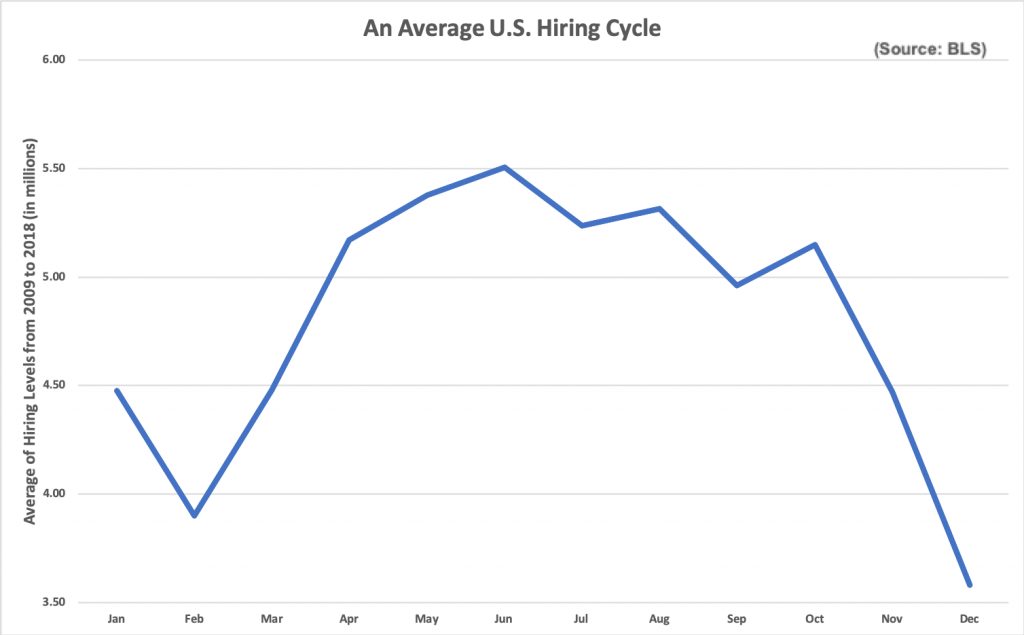Don’t Just Grin and Bear It
Julia was a successful HR VP for more than a decade before she decided it was now or never as far as reproduction was concerned. Her spouse was supportive, so they decided ultimately to have two children. She stayed home, raised them diligently until she could conscionably put them into daycare. She then dusted off her resume to return to her career track. “Don’t Just Grin and Bear It” takes a closer look at her situation.

First, rather a lot had changed in the meantime in the job market. But more profoundly, she realized that she did not even know how to search for an adequate job any more.
The public job boards listed many interesting jobs, but, being public, they are typically swamped with applications. As a result, several have to some extent adopted computerized screening of applicants’ resumes to ease the burden of picking through the most qualified.
Julia felt increasingly nervous as the days ticked past with little or no response to her resolute applications—usually five per day.
That is no surprise to us.
Only about 15% of our clients actually land through the public job markets for exactly this reason. Also, note that the competition for those jobs is fierce. That tends to make it an employers’ market with the resultant effect on compensation for those lucky enough to get through the screening.
Nevertheless, according to author Sheryl Sandberg’s Lean In: Women, Work and the Will to Lead, 74% of professional women do rejoin the workforce after taking time off to have families.
USA Today (March 25, 2019) highlights another interesting trend: “The best job market in half a century has been a boon for older women going back to work, typically after raising kids for nearly 20 years, and for those staying in the workforce at more advanced ages.”
These women accomplish this feat in many ways, but, most of our clients —75% in fact—find their next opportunity through the unpublished market.

For example, one recent client could not seem to get a foot in the door with CEOs in her relevant target market. We helped her leverage her social capital. She soon discovered that her next door neighbor was extremely well connected to CEOs in the U.S. because he actually made and sold executive desks to CEOs. Needless to say, it did not take long for her to utilize this connection. She was soon interviewing and shortly thereafter, back in the saddle, so to speak.
Whether you are a returning mother or not, everyone looking for a job needs excellent moral as well as professional support.

Here’s what one Clarity Program© client, Carol Knouse, hat to say about her Barrett Group experience:
“Working with the Barrett Group was a game changer for me. It had been years since I looked for a new position and my consultant really educated me with regard to changes in the recruiting industry along with the use of social media like LinkedIn. She kept me on track and I really learned how to market myself. Anyone looking for a job or career change owes it to themselves to work with TBG!”
Don’t let “the best job market in half a century” pass you by! Get in there and find that perfect job now. If you don’t know where to start, consider our Clarity Program©.
Peter Irish
CEO
The Barrett Group
Read more blog posts:
An Algorithm Took My Job
That’s exactly what Joe told me the other day on the phone: “An algorithm took my job!”

Joe had been a successful stock analyst for more than 20 years on Wall Street, usually working from home, often trading late into the early morning hours and generating excellent returns. He is an introvert by nature, so his social circle and professional network are not robust. Maybe he wasn’t listening adequately to the march of technology.
So when his long term employer was acquired and the new managers announced they were hopping on the exchange traded funds bandwagon, Joe was out on the street—and totally unprepared.
As a career management firm active for more than three decades, we hear this story again and again.
What about the ignition system and drive chain engineers suddenly rendered obsolete by automakers’ shift to electric vehicles? The recruiter whose screening of resumes is now handled predominantly by AI? Or the airline attendant made redundant by the check-in kiosk?
And it will continue.
As in many cases, the best defense is a good offense. Start rethinking your career now before you have to and head for higher ground. There are many pockets where people are still preferable to machines, and there probably always will be.
So where are they?
Actually, that’s the wrong question. The first question is, how satisfied are you with your current career track? Adding your voice to our Job Satisfaction Survey may help you answer this question.
The second question is what occupation best fits your skills, experience, and preferences? If you want or must change jobs, then why not look for one you will enjoy and that will compensate you appropriately? Our Clarity Program© helps executives reconsider how they can best utilize their personalities, their skills, and their experience to better fit their changing life circumstances and drive in a coherent long term direction—a personal strategic plan. More than 400 executives have rated this program resoundingly “Excellent” so far.

Here’s what one recent Clarity Program© client, Georgie Seitz, had to say:
“[My Clarity Coach] Julie was Tremendous… She’s a great motivator and so very easy to work with. I feel I got off to a really good start thanks to her motivation, and I’m really looking forward to the next steps. This part of the program was Excellent…”
Our Clarity Program© has helped people like Joe understand that their real skill is actually in pattern recognition—a highly transferable skill. Joe went on to become a data analytics VP in a completely new industry.
Now you might think that the new jobs are less valuable than the old ones, but again, the Economist’s research does not bear that out: “The incidence of “low pay”—workers who earn less than two-thirds of the median—has been falling for two decades.” (The Economist, May 25, 2019, Briefing: Labor markets.)
The old adage is “As long as there is life, there is hope…” so keep an open mind, and do not be afraid to reinvent yourself.
Peter Irish
CEO
The Barrett Group
Read more blog entries:
Executives Are People, Too
In our line of work we talk to a lot of people every week. Many of them wonder why, if this economy is so fantastic, do they feel the need to change jobs?

As the Economist and many other sources report, the US economy is really doing very well with unemployment below 3.8% nationally, and most macroeconomic risks (other than trade) currently in retreat. This should actually encourage executives to look around and consider whether they are living the lives they really envisioned for themselves and their families.
It is a job-seekers’ market.
So why do so many executives feel helpless at the thought of taking that step? Or for that matter, why do they feel so uncomfortable in their current jobs to begin with?
Let us take the reasons one by one. Today, we’d like to focus on perceived ageism.
Consider this: David contacted us recently after more than 25 years working in merchandising in New York. He has created multiple collections in numerous merchandise categories, driven these assortments though product managers successfully to market using brick and mortar stores and web shops. He has had five or six longer engagements during his 25 year career.
Suddenly, the pipeline is empty. Where recruiters and entrepreneurs used to call him up and actively seek him out, now he hears over and over again the dreadful judgment, “Sorry, but you are overqualified…” as feedback on job interviews—if he hears back at all.

It’s depressing for him and he’s struggling to keep his head up… struggling to maintain his own self-respect. He’s not destitute, but he’s not able to retire either and while his kids have grown and moved on, he and his wife still must maintain their modest lifestyle and prepare for eventual retirement. He is quietly desperate… even if he won’t admit it.
Ageism is insidious and you may never really know if you are truly a victim, because few
potential employers will actually be candid these days due to the risk of a law suit, but David suspects it is the on-set of ageism.
Should he continue to send his resume again and again, applying for great-sounding jobs on various on-line job boards? What other options are there?
You Have Options!
Only about 15% of our clients now land new jobs through job boards, so it is certainly worth trying, but also not sufficient. In fact, it is advisable to try additional approaches and to hire a firm like the Barrett Group to assist you if you feel you have lost your way professionally.
As David admitted to me, “I haven’t looked for a job in twenty years and the market has really changed in the meantime.”
Most important is the question of targeting. If David continues to pursue the same career target over and over again, then the chances of his success actually diminish even as his courage and resolve dwindle, too.
We have an answer for this situation. Our Clarity Program© helps people like David to actively rethink their career targets. We take a holistic approach, considering the personality and behavior of the individual, his or her current life circumstances, and longer term career objectives into account to help people like David reinvent their approach.
One recent client, Trista Fawley, told us this about the Clarity Program©:
“[My Clarity Coach] Scott was amazing and made me feel very comfortable. His insights and approach to breaking down the “big rocks” is an invaluable skill.
I know I am early in the process but my time working with Scott has already started paying off in the way I view myself and my abilities.”

Consider evaluating your own situation by completing our Satisfaction Survey.
We love to help people rethink their career objectives, too, via our Clarity Program©.
Let us know if we can help you.
Peter Irish
CEO
The Barrett Group
Read more blog posts:
What to Know About Hiring Cycles to Ensure a Successful Job Search
by Julie Norwell
Many factors affect hiring cycles and recruitment. Some are internal to an organization, such as organizational culture, or company product releases. Some are external to an organization, like economic trends. Seasonality is definitely important. Naturally, industry fluctuations play a big role, too.

It’s the Economy, Stupid!
Obviously, the economy is the paramount influence when it comes to hiring cycles. A strong economy means a good job market. With the unemployment rate currently at 3.6%, a 50-year low, we are seeing a uniquely advantageous time to be job hunting. However, the situation is even more interesting.

It’s clear from the most recent data released by the Bureau of Labor Statistics that many aspects of the job market are in ground-breaking territory – much of it good news to job seekers.
According to the Job Openings and Labor Turnover Survey (JOLTS), job openings have surged over the past decade.
Since hitting a low in July 2009, job openings have rocketed past the pre-recession peak of 5 million in 2014 to 7.4 million at the end of April 2019. Hiring increases have been even more impressive, surpassing pre-recession levels and peaking at 5.9 million hires, a series high.
What’s particularly notable about these figures is this: For most of the JOLTS history the number of hires (measured throughout the month) has exceeded the number of job openings (measured only on the last business day of the month). Since January 2015, however, this relationship has reversed, with job openings consistently outnumbering hires.
In other words, there are a LOT of open jobs. This April, there were 1.5 million more job openings than there were newly hired people. In fact, there are now more jobs available than there are unemployed people! The ratio of unemployed persons per job opening was 0.8 in April according to JOLTS.
Clearly, in this market, the onus is on companies to act quickly lest they lose out on hiring the best talent.
What Industry is Hot and What’s Not?
There is an unsettling truth to keep in perspective if you’re looking to change careers: One reason why there are so many more open jobs than there are unemployed people is because there is a skills gap. Many open jobs are in technical fields requiring skills that too few job seekers have. If you are in a position to do so, you can’t go wrong by improving your technical skills. Technical fields and technical industries are perennially hot when it comes to hiring.
But other industries are growing, too. According to a monthly analysis by LinkedIn, the industries with the most notable hiring shifts in May were Corporate Services (7.6%), Wellness & Fitness (7.4% higher), and Software & IT Services (6.7% higher).
Year to year, employment in professional and business services, and health care continue to trend up. The chart shows the yearly change in the hiring rate in several industries according to the Bureau of Labor Statistics.
Wondering which industries to shy away from? Answer: Mining and Logging, and export-producing goods industries, like Agriculture and Manufacturing – all of which are facing significant downturns in hiring.

A Season for Change
The granddaddy of all hiring cycles is the calendar. While some industries buck the historical trends, there are definitive hiring seasons during the year. Understanding the trends will help you choose the optimal times of the year to pursue a career change.
1st Quarter
For several reasons, a New Year means new jobs. Companies have new hiring budgets and sales forecasts to act on at this time. Recruitment managers are refreshed after a holiday vacation and eager to start filling newly created positions. Moreover, many workers resolve at this time of year to make a career change, which creates opportunities in newly vacated positions. For all these reasons, the January-February time-frame is the springboard of a hiring season that continues throughout the spring.
2nd Quarter
The 2nd Quarter is also a good time to job search, although the later you wait, the fewer job options you might have. The ranks of new hires towards the end of this quarter tend to be filled out by newly minted college graduates. But hiring for many industries peaks in the spring, especially Construction, Tourism and Hospitality. It’s also common to find, at this time, many hiring managers scrambling to fill open spots before the office empties for the summer months.
3rd Quarter
Not surprisingly, hiring surges for seasonal industries like Tourism, and Outdoor & Leisure are typical during the summer months. Education also sees a big boost, as school districts seek to replace non-returning teachers. Professional industries, however, tend to experience a hiring lull. To the extent that companies are hiring, the available jobs are more likely to be seasonal or lower-level positions. After all, it’s hard to set up interviews and streamline the hiring process when people are on vacation.
4th Quarter
Back-to-school season is also a “back-to-work” season, with hiring bumping up again. Rejuvenated once again from their summer vacations, hiring managers are keen to fill available spots in their departments during September and October. They are often motivated by a “use it, or lose it” mentality because whatever funds might remain in their hiring budget at the end of the year will disappear. In November and December, however, hiring falls of a cliff. The glut of major holidays and depleted budgets puts hiring on hold for many industries.

The chart on the left tells the basic story of hiring during the year, but remember that not every industry falls neatly into this pattern.
Hiring in Retail, Warehousing, Transportation and Customer Service, for example, surges during the end-of-the-year holiday season.
Likewise, because January to April is peak business season for Tax and Accounting professionals, hiring in these industries tends to happen outside these busy months.
Regardless of the season, you should never be doing nothing if you’re a job seeker. Slow times are ideal times to be researching new options, developing new skills and, most importantly, networking.
All of these tasks take time and are incredibly important in positioning you to act quickly when the right opportunity presents itself.
Create Your Own Hiring Advantages
If you are trying to figure out the best time to start a career change, familiarizing yourself with cycles and trends that influence hiring and recruitment is a useful place to start. But careers begin and end regardless of whatever economic trends, seasonal cycles, and industry changes are doing. So, when you’re trying to decide the best time to start your career change, the answer is NOW.
The most important influences on your recruitment by a future employer are the ones that you create for yourself.
That means that you should keep abreast of what is going on at your target companies, watch for news announcements that may identify an optimal time for you to make your move. Some hiring managers budget for positions early, so plan ahead and be prepared to send a resume at anytime.
The best time to get a new job is always whenever the right job comes along. The timing of that might be unique – completely outside typical hiring cycles. It could be NOW.
So, continue to network regularly, build relationships, develop new skills for yourself, and prepare to move quickly when the right opportunity comes along.

Related articles:
Overcoming Barriers to Your Success
by Julie Norwell
Most people focus on their career in a reactionary instead of a strategic way. That means that if things go south, it is hard to understand what went wrong. Let’s take a look of possible barriers to your success.

If you’ve adapted to the status quo, switching gears is hard. You may face barriers to change that sometimes feel insurmountable. Some of these barriers are very real, while others might be self-imposed.
Either way, overcoming barriers to your success often involves a level of self-reflection during which you analyze your career and, more broadly, your life in order to assess your innermost goals and your value proposition – that is, everything that you can offer an employer. Only after you have taken stock of yourself and your dreams can you make informed decisions about how best to manage your career effectively and achieve your goals.
Common Barriers

What is standing in your way? If you feel stymied in your efforts to advance your career, answering that question is the first step towards overcoming whatever barriers you face.
Maybe you’re worried about money. Or you don’t relish the idea of starting a new career at the bottom rung of the ladder. Maybe you struggle to find time in your day to job hunt.
Many people are paralyzed by fear – fear of losing their job; fear of speaking up at work; fear of getting passed over for a job because of age, gender or race. Or perhaps you have “impostor syndrome,” the fear that you aren’t qualified to do the job your hired to do.
Perhaps your problem is simply that you know that you are unhappy in your current job, but you just aren’t sure what else to do. Or maybe you know what you want to do, but you have no idea how to pursue it.
Some people worry about lacking experience. By the way, if this is you, you’re not alone. In today’s economy this should actually be everybody’s concern because the rapid change of digital technology is disrupting business processes in so many industries.
A 2016 report by the World Economic Forum forecast that within five years over one-third of skills that are considered important in the workforce will have changed.
Only after you identify what is standing in your way to a more fulfilling career can you focus on overcoming it. But be sure to give the question serious reflection. Arriving at an honest answer here is crucial, and it isn’t always easy.

Get Clarity
You may need to dig deep to assess the real barriers between you and your goals. It may even be worth engaging the professional services of a career coach, such as those at The Barrett Group. Career coaches are a great resource for someone in a rut because they intentionally push clients out of their comfort zone and encourage them to consider perspectives and options they may not have thought of.
The methodology starts by investigating all aspects of what’s right and wrong in your life, including financial independence, business success, family and relationships, and health and fitness. Ask yourself challenging questions such as:
- What are you most proud of?
- Success – what does it look like? or
- What is the worst thing that could happen if you don’t achieve your goal?

Such questions help differentiate between societal ideals of success (e.g. money or status) and personal successes (e.g. work-life balance and a happy family).
Use the “Five Whys” technique to drill down to the root cause of a problem. In this approach, you identify your problem (e.g. I’m unhappy at work) and ask yourself “why.” Repeat the question five times in response to each answer.
Typically, you will uncover alterable behavior on your part that could resolve the problem. When you ferret out self-imposed barriers in the path of your career advancement, you can think through how to dismantle them.
Commit to the Process
The clarity process is the hard part. Once that is done, you just need to come up with a game plan for advancing your goals and commit to it. First, consider how you can lessen the barriers to your success that you identified.
Lack of experience? Up your game through online courses, reading books, or volunteering to work alongside someone who can coach you. Of course, if you’re an older worker, don’t underestimate the value of your soft skills.
Not enough time? Completely understandable! Prioritizing a career change is very hard, especially given that it doesn’t provide immediate gratification. Still, the benefits of scheduling even a few hours per week into your calendar to promote your career will build up over time.

Unsure how to pursue your goal? Start by building and nurturing your network of contacts. Reach out to them and have a conversation or solicit advice. You’ll be amazed how informative and helpful people can be.
How to Stay Motivated
Change is stressful and the frustrations of a job search can wear down the best of us. Getting organized and structuring a routine in your job search will help. Set S.M.A.R.T goals – goals that are specific, measurable, achievable, relevant, and time-bound.
For example, schedule 10 hours per week towards enhancing your career opportunities, target three resumes per week to send out, or plan to meet 10 people for coffee per month. Revise the numbers as necessary, but stick to it!
There are several other steps you can also take to stay motivated:
- Focus on what you can control and not on the things you can’t control.
- Celebrate small victories whenever you can.
- Make a list of all your accomplishments, which has the dual benefit of making you feel good about yourself and providing you with a handy reference of your career highlights to use for quick reference. It may also spark ideas about how to link different career goals!
- Take mental breaks – looking for a new job is hard!

Don’t forget to keep things in perspective. If you ask people how they came to be doing what they are doing, they often answer that they fell into it due to chance circumstances. That may be frustrating to hear, but it should actually encourage you.
“Chance circumstances” is a testimony to networking. If you cultivate and grow your network, you will be surprised how opportunities will crop up.
Changing careers isn’t easy, but it’s easier than staying in a job you don’t want. It’s also easier when you have a strategy to overcoming the barriers to your success.
Related articles:
Hone Your Networking Skills…and Slip in the Backdoor to Land Your Next Job
by Julie Norwell
Did you know that 85% of all jobs are landed through networking?

If you know nothing else about networking, that statistic should focus your mind – and your approach to job seeking. Short of being born into royalty, networking is THE best way to land a job, bar none. And, therefore, it should comprise the lion’s share of any efforts you exert to find a new job.

Networking has been touted for years as a valuable tool during a job hunt. In the digital workforce, it is indispensable.
According to a survey published on LinkedIn, networking is the biggest factor in finding a job for all types of people – whether they are actively job hunting, employed, or any combination of the two.
In fact, the survey indicates that the people who get jobs from networking most often are actually employed and NOT actively looking for a job. In many cases, they’ve been offered a job before it was published. That’s some powerful networking!
Are you fully leveraging your network in your job hunt? If not, it’s time to hone your skills so you, too, can slip through the backdoor of a company to land your next job.
Sow the Seeds Early, Reap the Benefits Later
It has been said that the best time to plant a tree is 20 years ago; the second best time is today. The same could be said of building a network of contacts.
A network is much more than the people whose business cards you collect. It’s about building valuable relationships.
Relationships develop over time and must be nurtured and maintained. Naturally, a network includes your professional contacts, but it also includes everyone you’ve ever met in any capacity: former co-workers, clients, vendors, school friends, people in your running club, members of your church – your family, of course…the list goes on.

If you’re anxious about getting started with networking, these are the people you should reconnect with first. Sure, your aunt is probably not the one who can help you get a job at Google. But her neighbor’s daughter’s boss might. You’ll never know unless you reach out to connect with her.

When you reach out for the first time, find out what people are up to. Typically, you will catch up a bit and talk about family, work and aspirations for life. When you enter into those conversations, focus on giving to the relationship, not taking.
At some point in the future, your contact may talk to someone about something that reminds them of the conversation with you and they’ll reach back out to you. It may take a short time or a long time – but the opportunity will grow only if you’ve planted the seed.
Continue to build these connections and expand your circle. Surprisingly often, they lead somewhere.
Get LinkedIn
While a business lunch is still a perfectly acceptable way to network, the best way to build and maintain the informal relationships that are most useful in job hunting is through social media. Facebook, Instagram and Twitter are popular options with younger folks. For more seasoned professionals, however, the most important one is LinkedIn, where 56% of workers go to job search.
Unlike other social network websites, LinkedIn is uniquely designed for professional networking. You can summarize your career and highlight certain skills and expertise. You make connections by inviting people to join your network.
This enables you to see their connections and even the connections of those connections. Through this visual web of professional connections, you can develop new ones at the companies or industries that interest you.
Members in your network can also endorse you for skills, which increases your professional value in the eyes of other members of your network. Your goal should be to get endorsements from 99+ people in your network.
How? The easiest way is to endorse people in your network yourself. People will often return the favor. What’s more, the activity might also lead to a phone call in which you verbally reconnect, catch up and possibly learn about upcoming opportunities.

Three Types of Networks
As you build your professional network, you should remember that networking is not just for job-seekers. Everyone should always be networking because there are so many other tangential benefits. Networking is a great way to build up references, meet potential new clients and vendors, and learn the perspective of people outside your industry.
According to professional organization, Association of Talent Development, there are three main types of professional networks: operational, personal, and strategic.
- Operational – this is the group that you engage with in a professional sense and upon whom your success hinges. These are the people around you that you need to do your day-to-day work – your immediate colleagues.
- Personal – this group includes those individuals that you trust and to whom you can turn for advice or just to discuss career options, even in a social setting, like coaches, mentors or people you might ask to be a reference.
- Strategic – this network may overlap the other two. These are peers, industry leaders or other contacts with whom you can share ideas, discuss future initiatives and how to realize your goals. Building and maintaining this network takes time and attention away from your routine, so it is typically the most neglected of the three networks. But it is, arguably, the most crucial one to build.

Whenever possible, you should always try to be on the giving end of a relationship with anyone in your network; it builds good will and you never know when you might need to exercise some of that social capital for your own benefit.
Success in Any Industry Starts with Networking
No matter what industry you are in, it is smart to develop a strong network, especially one that spans many other industries, because you just never know where an opportunity might arise.
Dan Resendes, Chief Consulting Officer of the Barrett Group, recounts the story of a client who was an executive at Pepsico for 22 years. He was looking for something new, but was getting no traction because of ageism.
The client used LinkedIn Analytics and was soon referred by someone in his network to two scientists who were trying to produce an artificial sweetener. He went to work for them, and in his second year made over a million dollars. He never used a recruiter or even a resume. It was all word of mouth.
“This happens all the time,” said Resendes. “Of our clients, 75% land a job through their social networks.”
When you leverage your networking skills, you learn about potential opportunities before they even become available. With luck, that creates an opportunity – and then you slip in the backdoor.
Career Management Tips for Legal Executives
by Dan Resendes, Chief Consulting Officer at The Barrett Group

When considering changing careers, keep the following tips from The Barrett Group Legal’s career management professionals in mind to prevent some of the most common mistakes legal professionals make:
- If you want to get out of litigation, do not focus on litigation as your main competency, nor billable hours and case work in your value proposition. Instead, highlight your marketing or business development skill sets; how you run operations of your own law firm; your community outreach; all of the charities and relationships you built with municipalities and government representatives.
- When transitioning from a private practice or law firm employer to a corporate in-house or legal services employment, include your competencies in collaboration, leadership, interdepartmental and cross functional communication; as well as best practices and protocol authoring/compliance; customer, community and vendor/3rd party acquisition, outreach, and relationship nurturing.
- Focus on corporate or company challenges versus cases won and case law.
- Highlight operational expertise, accounting and financial wellness, marketing and business development efforts, pro bono, community or charity work.
- Include metrics and quantifiable results – employ workarounds in content authoring if concerned about confidentiality.
- Get used to working with Word documents versus PDFs for your hiring process.

